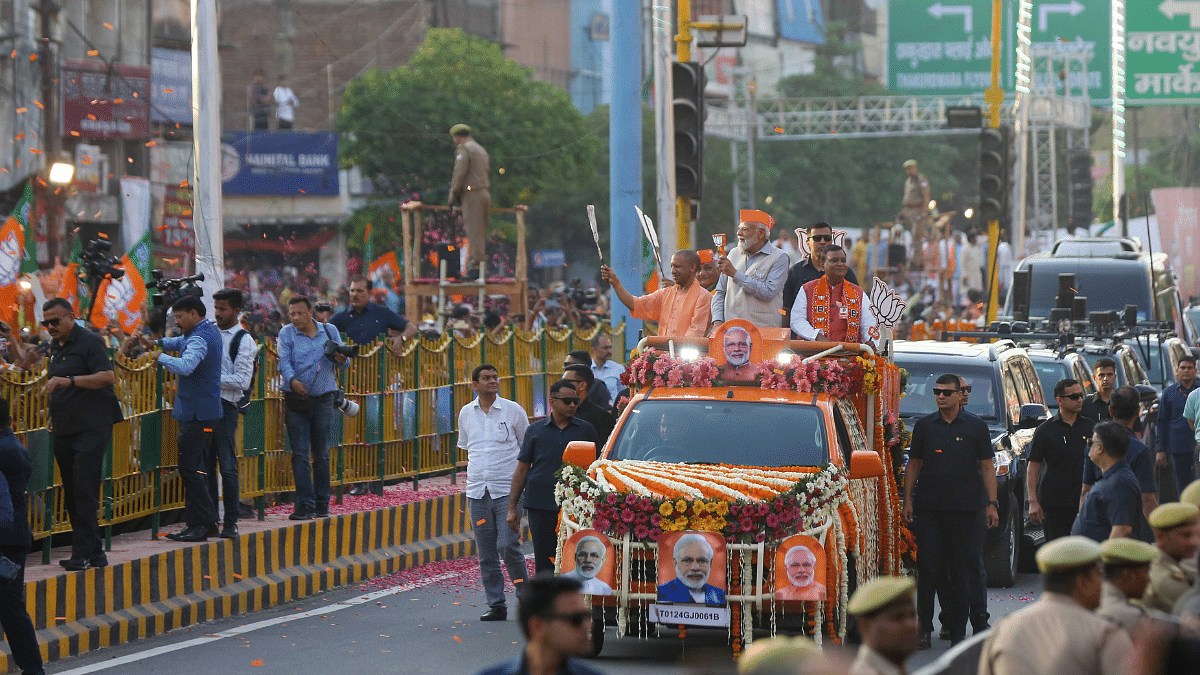Lucknow: Daily report cards, mandatory presence of candidates in nukkad sabhas to panna pramukhs being ‘responsible’ for a set of families – the BJP’s election campaign in Uttar Pradesh is exhaustive and high on accountability.
A party district president said there was no way “one could fool seniors” as everything was being recorded on a daily basis and a report card sent higher up, which in turn, was digitised.
The BJP’s campaign management for the upcoming Lok Sabha in the country’s largest state is rather corporatesque. Workers prepare a detailed account of voters contacted every day, virtual meetings of all district heads are held weekly and the daily activity of candidates is chalked out to the tee.
For example, the labhharti sampark abhiyan has party and booth-level workers reaching out to beneficiaries of important central government schemes on a daily basis. But a party worker at the booth level cannot simply claim to have contacted a certain number of people. Every labharti or beneficiary who they contact is then asked to give a call on a toll-free number of the party. The labharti receives an OTP, through which it is verified that they have actually been contacted.
“We contact over a thousand labhartis in districts every day. We have covered over 1.5 lakh so far, and the target is 5-6 lakhs,” the district president said. “There is no scope of forging numbers — it is all digitally managed.”
Each labharti sampark report card includes the parliamentary constituency number, the Lok Sabha constituency, the mandals covered, the number of karyakartas at each mandal, and the number of people contacted, with a separate column for the “verified” people.
The nukkad sabhas organised by the party are another example of how carefully supervised the campaign is. In every constituency, there is a plan of how many nukkad sabhas — gatherings of about 50 to 60 people in villages — have to be organised. The plan is already detailed by the party, and the candidate has to attend the day’s gatherings without fail. The pictures of each meeting are then uploaded and shared with the party management at the centre.
Also read: How BJP is using 2024 Lok Sabha election to lay groundwork for post-Modi succession plan
All this is reviewed in weekly meetings held for all district presidents across the state. “If someone is not performing well, even someone like B.L. Santhosh (the national general secretary of the BJP) can pull them up, and ask them to meet targets,” the district president added.
There is a strict hierarchy which ensures execution at every level. The central team of the BJP tops the ladder, followed by the state team headed by state president Bhupendra Singh Chaudhary and general secretary (organisation) Dharampal Singh.
Beneath the state team, there are different kshetra teams, which are further divided into district teams. Every district has two heads, under whom there are about 20 to 30 mandals, each with mandal adhyakshes (presidents) of their own. These are further divided into shaktikendras headed by sanyojaks. Every shaktikendra has four to five booths under it. Finally, each booth has about 1,000 people, who are divided among panna pramukhs — the lowest unit of the party’s giant structure.
As per the ghar ghar sampark abhiyan of the party, every panna pramukh is expected to visit each household in their ambit three to five times before the election. A panna pramukh is the head of one page of the voter list, which consists of nearly 30 voters, and is responsible for carrying the party’s message to them directly, and also ensuring that these voters come out to vote on the day of election.
A senior BJP functionary said: “Six to seven days before the voting, they will go to these homes, and give them a parivar parchi which will have details of all voters in the family, and where they have to go to cast their vote.”
“Finally, three days before the voting, they hand out individual voter parchis as well,” the functionary added, saying these were ways to ensure regular contact with voters before the election.
According to another functionary in the party, there are about 1.75 lakh booths across Uttar Pradesh, with each having 15 to 20 panna pramukhs.
“This time, our micro-level management is much stronger than in 2019,” the district president said. “At the ground level, our campaign is very well coordinated, and is closely being monitored by the central team in Delhi.”
(Edited by Tikli Basu)
Also read: Just 16% of BJP’s Lok Sabha candidates are women & over half of them are from political families

